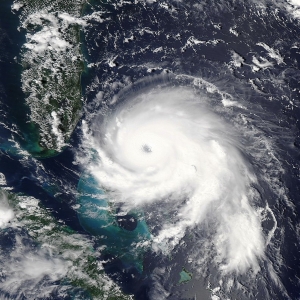Federal Water Tap, September 16: Trump Administration Finalizes WOTUS Repeal
The Rundown
The Army Corps and EPA move to reduce Clean Water Act protections. The EPA seeks to define a harmful algal bloom or hypoxia event of “national significance.” Defense Department officials say that PFAS cleanup costs will be bigger than initial estimates. The USDA sets rules and formulas for disbursing $3 billion in disaster aid to farmers. The Senate Appropriations Committee advances a $48.9 billion water and energy budget bill. A USGS study finds not enough groundwater for all permitted and proposed extraction in the Snake Valley, along the Nevada-Utah border. And lastly, Congress holds hearings this week on Michigan environmental justice, young climate leaders, and the administration’s Clean Water Act policies.
“Do I think it’s going to be bigger than that? The answer is yes.” — Maureen Sullivan, deputy assistant secretary of defense for environment, when asked by The Hill whether she thought the Defense Department’s cleanup cost for PFAS chemicals will be above the initial estimate of $2 billion.
By the Numbers
$48.9 billion: Fiscal year 2020 energy and water spending bill that was sent to the full Senate. The bill, some $10.8 billion above President Trump’s request, funds the Department of Energy, Bureau of Reclamation, and Army Corps of Engineers. (Appropriations Committee)
$3 billion: Funding that Congress appropriated to compensate farmers whose crops were damaged by floods, fire, hurricanes, and other natural hazards during 2018 and 2019. The USDA finalized a rule for eligibility requirements and calculating payments. (U.S. Department of Agriculture)
News Briefs
WOTUS Rule Gone
The Trump administration finalized the repeal of an Obama-era rule that sought to clarify the scope of the Clean Water Act. Repealing the controversial rule will revert the definition of protected waters to determinations that were made in 1986.
Repealing the Obama-era rule is step one for the Trump administration in its attempt to restrict the protections provided by the nation’s landmark water pollution law. The administration’s second step is to write its own definition. The EPA and the Army Corps published a draft rule in December that will dramatically reduce the number of protected waterways, especially in the American West, where rivers that flow only in response to seasonal rains would not be covered. A less restrictive rule is a measure cheered by the farm lobby, energy companies, and developers. It would give those industries more leeway to pave over wetlands and discharge pollutants.
The administration’s maneuvering is part of a decades-long battle over key phrases in the Clean Water Act that neither the Supreme Court nor Congress has adequately defined. The main question is what constitutes “waters of the United States?” Waters of the United States are protected, but the definition remains unsettled.
The Obama rule was subjected to legal challenges from state attorneys general and industry. Similarly, legal experts anticipate that the Trump administration’s actions will also land in court.
EPA Water Reuse Plan
Encouraging the recycling and reuse of water and coordinating between sectors and agencies will be a federal government priority under a draft plan published by the EPA.
The plan provides examples of reuse and identifies potential sources, such as municipal treatment plants, oil and gas operations, and urban stormwater. It recommends 46 actions, including data collection to understand downstream consequences of increased reuse, assessing the use of oilfield produced water, and a national “branding campaign” to rally support for water reuse.
Public comments are being accepted on the draft plan for 90 days. Submit them via www.regulations.gov using docket number EPA–HQ–OW–0174.
Senate Water Funding Bill
The Senate approved a measure that allows states to transfer money between two water infrastructure loan funds. One fund is designated for drinking water infrastructure; the other for sewer, wastewater, and stormwater.
EPA Seeks Harmful Algal Bloom Comments
The EPA wants public input for its attempt to define a freshwater harmful algal bloom or hypoxia event of “national significance.”
Legislation passed by Congress in 2017 allows the agency to make a designation and provide matching funds to states for response. But first, the term “national significance” needs to be defined.
The legislation outlined six areas for consideration: toxicity, severity, potential to spread, economic impact, size, and potential to affect multiple political jurisdictions. The EPA is seeking comment on what metrics would be useful for each of these areas.
NOAA, which also has authority to designate a nationally significant event, opened a separate process for defining such occurrences in coastal and marine waters.
Comments are due October 31. Submit them via www.regulations.gov using docket number EPA-HQ-OW-0463.
Studies and Reports
Snake Valley Groundwater
There is not enough water to support important wetlands and springs in a semi-arid desert ecosystem that straddles the Nevada-Utah border if all permitted and proposed groundwater rights are put to use, according to a U.S. Geological Survey study of the Snake Valley. There also may not be enough groundwater to satisfy the desires of the Las Vegas area, whose water agencies have eyed the valley for decades as a potential supply source.
Some 250 miles north of Las Vegas, the Snake Valley is threaded with groundwater-fed springs and wetlands. Those waterways are habitat for threatened and endangered fish species and support the area’s ranching and farm operations. The water beneath the valley has also been targeted by the Southern Nevada Water Authority, a regional wholesaler that serves Las Vegas. As the region becomes drier, climate change is putting pressure on water availability for humans and nature.
Read more about the study from Circle of Blue.
On the Radar
Congressional Hearings
On September 16, the House Oversight and Reform Committee will gather in Detroit for a hearing on environmental justice in Michigan, focusing on air and water. Testifying will be Monica Lewis-Patrick of We the People of Detroit, Nayyirah Shariff of Flint Rising, and Nick Leonard of the Great Lakes Environmental Law Center, and others.
On September 18, the House Transportation and Infrastructure Committee will discuss the Trump administration’s Clean Water Act policy initiatives. Testifying will be Dave Ross, head of the EPA Office of Water, Maia Bellon of the Washington Department of Ecology, Geoffrey Gisler of the Southern Environmental Law Center, and others.
Also on September 18, the House Foreign Affairs Committee will listen to young climate change leaders, including and Jamie Margolin, co-founder of This Is Zero Hour, and the Swedish activist Greta Thunberg.
Federal Water Tap is a weekly digest spotting trends in U.S. government water policy. To get more water news, follow Circle of Blue on Twitter and sign up for our newsletter.
Brett writes about agriculture, energy, infrastructure, and the politics and economics of water in the United States. He also writes the Federal Water Tap, Circle of Blue’s weekly digest of U.S. government water news. He is the winner of two Society of Environmental Journalists reporting awards, one of the top honors in American environmental journalism: first place for explanatory reporting for a series on septic system pollution in the United States(2016) and third place for beat reporting in a small market (2014). He received the Sierra Club’s Distinguished Service Award in 2018. Brett lives in Seattle, where he hikes the mountains and bakes pies. Contact Brett Walton





Leave a Reply
Want to join the discussion?Feel free to contribute!